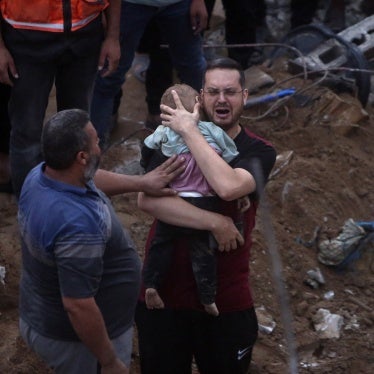Thank you, Chair.
Over the past year, the bombing and shelling of cities and towns has had devastating humanitarian consequences, which highlights the urgency of implementing the Political Declaration on Explosive Weapons.
The Declaration adopts a comprehensive approach to reducing the harm caused by explosive weapons. It calls on states to take preventive measures to avert future harm and remedial measures to assist conflict-affect communities.
Some of the Declaration’s commitments encompass both preventive and remedial measures.
Paragraph 3.1 calls on states to review and improve existing national policies and practices, adopt new ones where necessary, and implement all of them. This process implicates several principles that are applicable throughout the Declaration.
First, the process should advance the humanitarian goal of the Declaration. Second, the process should be ongoing. As additional data is acquired and technology evolves, policies and practices should be revisited and sharpened to best protect civilians. Third, the process should be transparent and collaborative to ensure states learn from each other and from other experts.
In addition, Paragraph 4.8 urges endorsing states to “actively promote” the Declaration and “seek adherence to its commitments,” which would cover all its provisions, even to those who have not joined the Declaration.
Other commitments in the Declaration focus specifically on assistance to conflict-affected communities. Paragraph 4.4 calls for states to “facilitate rapid, safe, and unhindered humanitarian access to those in need.” Because it promotes the delivery of aid in a timely and neutral manner, granting such access is a humanitarian imperative and a requirement of customary international humanitarian law.
Paragraph 4.5 lays out commitments related to victim assistance, which should be provided to survivors, families, and affected communities. Assistance should address basic needs, medical care, and psychological support. It should incorporate measures to promote socioeconomic inclusion and allow victims to realize their human rights. States should involve survivors and affected communities at all stages of the victim assistance process and support other organizations working in this area.
In a report released last week, Human Rights Watch and Harvard Law School’s International Human Rights Clinic call on states to understand their assistance commitments broadly. The report documents the effects of the use of explosive weapons in populated areas on cultural heritage—and, by extension, on civilians. Civilians living or sheltering in cultural heritage sites can be killed or injured, and local communities can lose their history, identity, or important sources of income.
Therefore, we call on states providing assistance to take into account the full range of civilian harm and take measures to address it. For example, states should grant rapid and safe access to cultural heritage defenders who can help preserve and document damage to sites important to communities. During the post-conflict rebuilding process, states should be sensitive to the value of cultural heritage to communities and make efforts to salvage it.
In conclusion, adopting and implementing measures to assist conflict-affected communities can help the Declaration realize its humanitarian potential.
Thank you.








